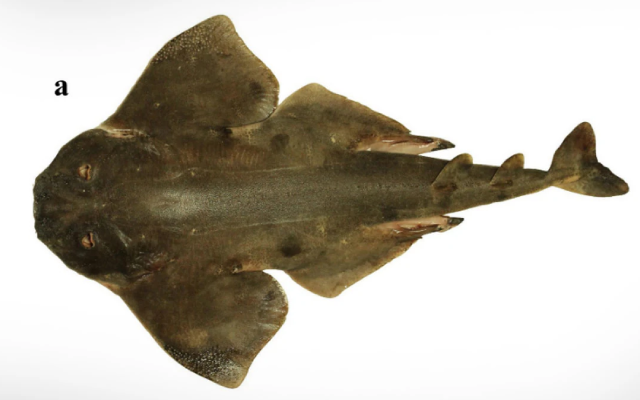Off the coast of Chile, artisanal fishermen were hunting for bony fish when they unintentionally caught something more important in their gill nets. A “lost” species had been discovered by them. The Chilean angel shark, a small, flat shark that resembles a ray and lives in shallow coastal waters, was first described by a researcher back in 1887. But according to a recent study that was published on April 25 in the European Journal of Taxonomy, this description was unreliable and lacking, as The Miami Herald stated.
According to the researchers, the 1887 study author provided only a handful of body measurements, insufficient to distinguish this specimen from its close relatives. To make matters worse, the collected animal was lost, leaving a gaping hole in our scientific understanding of the Chilean angel shark. While occasional bycatch offered glimpses of the species throughout history, a comprehensive description remained elusive. Then, as fate would have it, the elusive sharks landed, quite literally, in the hands of the fishermen.
After catching their unexpected bounty, the study details how the fishers froze two whole sharks and the head of a third before taking them to the National Museum of Natural History in Santiago, Chile. There, researchers were thrilled to confirm they had stumbled upon two Squatina armata, also known as Angelote in Spanish and Chilean angel shark in English.
The study describes the sharks as reaching just over 3 feet in length and possessing flattened bodies, giving them a striking resemblance to rays more than sharks. Adding to their unique appearance, these sharks sport “enlarged dorsal thorns” – small, sharp, hook-shaped protrusions found on both their heads and backs, according to the researchers.
Despite this lucky encounter, the Chilean angel shark remains shrouded in mystery. Due to limited research and infrequent sightings, the International Union for Conservation of Nature Red List classifies them as “critically endangered.” This scarcity echoes the behaviour of other angel sharks, like the common angel shark. As the National Ocean and Atmospheric Administration documented, these fascinating creatures are ambush predators. They patiently lie hidden in the seafloor, waiting for unsuspecting prey like small fish, crustaceans, mollusks, and even cephalopods to swim overhead before striking.
These mysterious animals are “nocturnal bottom-dwellers,” according to NOAA, spending the majority of their lives buried in the sand and mud of the coastal sediment.The study highlights how knowledge of this species’ identity and biology is “indispensable” to its preservation.Overfishing, habitat degradation, and coastal development pose serious threats to these sharks.
“Recent taxonomic studies on angel sharks … with this updated morphological characterization of the Chilean angel shark, questions on geographic range, estimations of abundance, and real incidence in landings can be clarified to ultimately inform better conservation practices of this critically endangered species and other angel sharks on the Pacific coast of America,” the researchers said. The sharks were caught near Playa Seremeno in northern Chile on the Pacific coast.
Read More
Mandd Sobhann’s ‘Voap’ Talent Camp: Konkani Culture for Next Generation
















